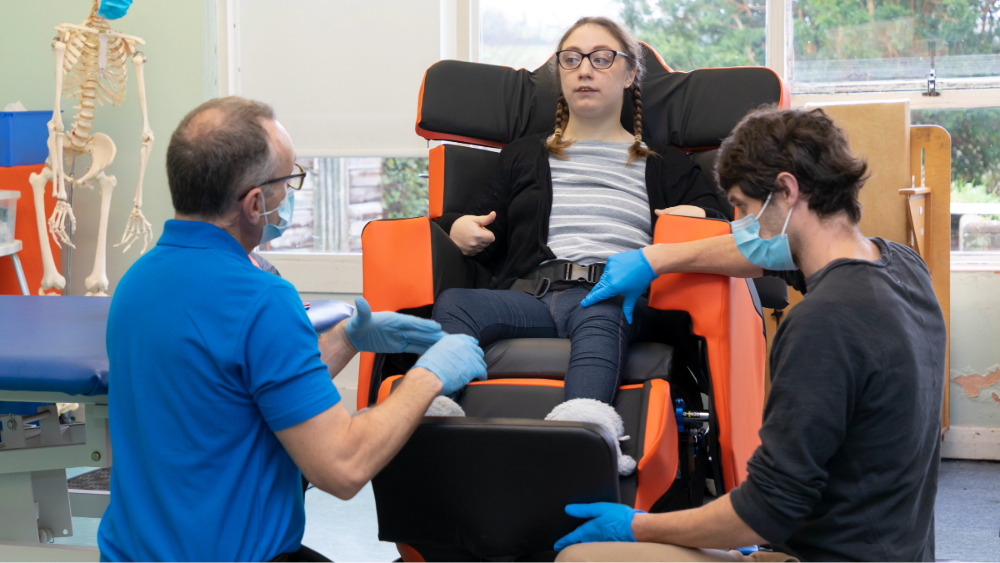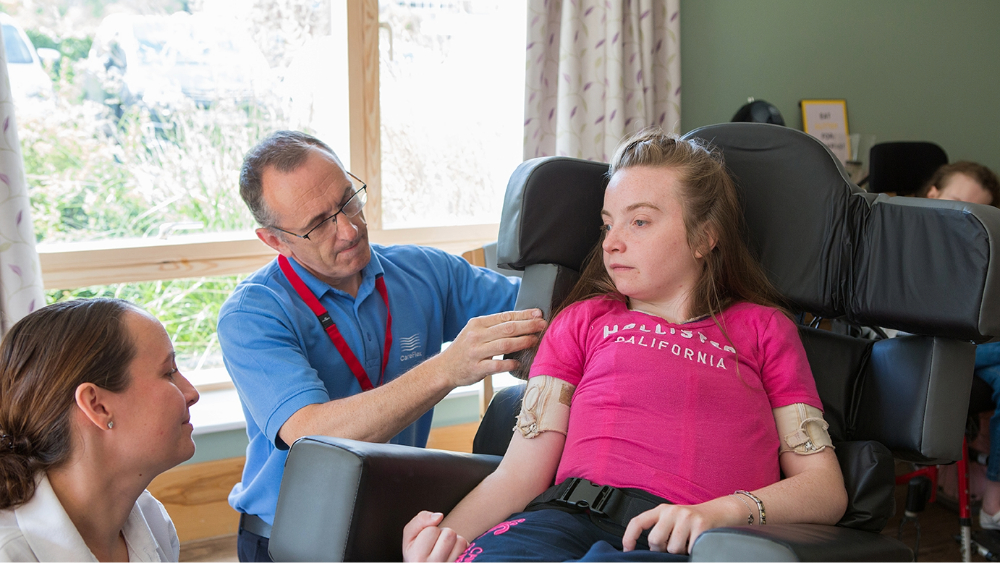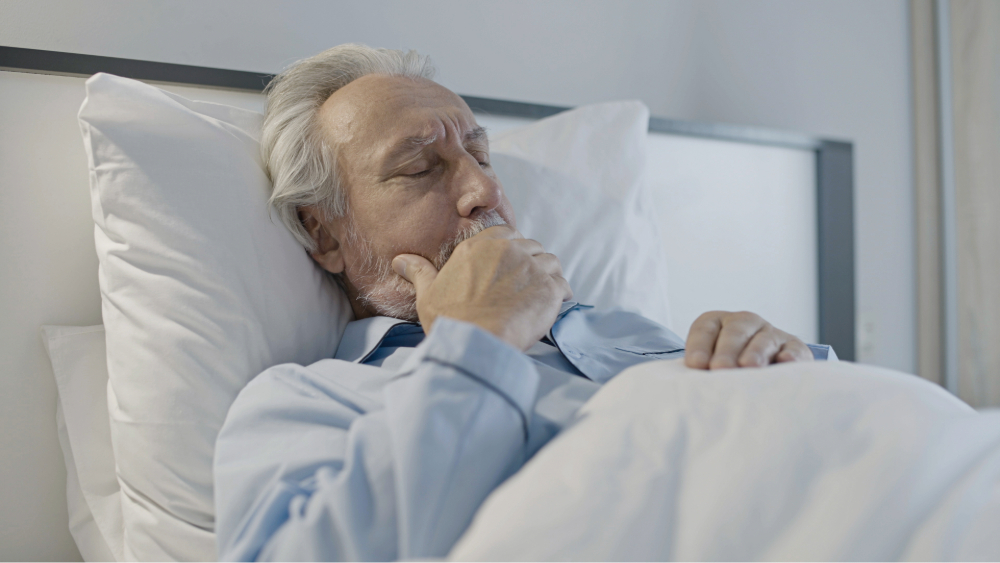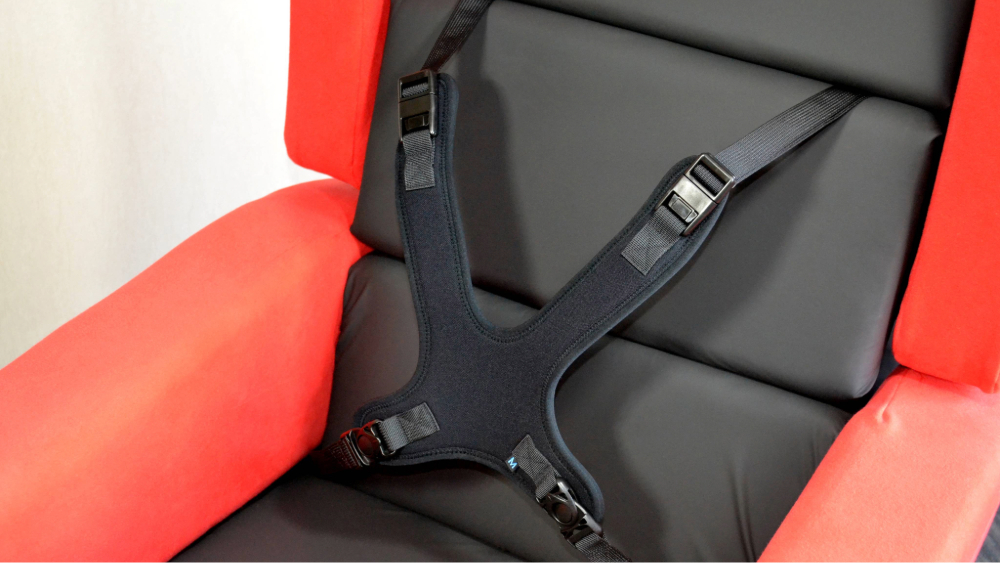When someone appears “unseatable”.
For people who are unable to move their body independently and rely on others for all of their postural care and positioning needs, or for those who have remained in bed for a prolonged period of time, joint contractures can develop, and the person can appear to become “unseatable”. This is a term used when someone appears to be unable to sit safely, and it is thought to be safer for them to be cared for in bed. This may be because they have spent a long time lying with their legs in extension and can no longer achieve adequate flexion at their hips to be able to sit, or because they have been lying in the fetal position and they have too much flexion in their knees so that their lower legs remain tucked underneath them.
As a general rule, the ideal amount of flexion for hips and knees to achieve a sitting position is 90°. However, this is not achievable for many people due to a variety of reasons. Certainly, people with less hip flexion are able to sit safely in appropriate seating that is able to accommodate their flexion limitations and there is no recommended minimum amount of hip flexion before someone is considered “unseatable”.
What is recommended is an individualised risk assessment for each individual. What works for one person may not be appropriate for another and we already know that seating assessments must be tailored to the individual and their specific needs.
It may be that some additional features could assist with allowing them to sit safely, such as:
- tilt-in-space
- back recline
- contoured or ramped seating
- custom contoured seating solutions
- pelvic belt
- adjustable foot support
Another possible solution is to consider introducing lying supports that may be able to improve posture for sitting, gradually increasing hip flexion or reducing knee flexion over time. This will depend on the individual, their stage of contracture and their susceptibility to tissue change, however there is evidence that suggests use of lying supports can improve sitting posture[1][2].
In some cases, it may be recommended to consider medical intervention through use of botox injections to release joint contractures. Or therapeutic interventions such as physiotherapy or splinting.
There are recognised health benefits of sitting and risks of remaining in bed, which must be weighed up in a cost/benefit analysis as part of the risk assessment to determine whether the benefits of sitting can be offset against the risks of remaining in bed for an individual.
| Health benefits of sitting | Risks of remaining in bed |
| – improved breathing | – increased risk of chest infections |
| – improved digestion | – increased risk of pressure ulcers |
| – increased ability to engage in activity and environment | – increased risk of joint contractures |
| – increased independence with everyday tasks | – more complex care requirements |
| – reduced care needs | – digestive complications |
Each risk associated with sitting must be considered as part of an individualised risk assessment, with appropriate solutions explored to ensure the safest and most effective outcome for that person.
At CareFlex, we are passionate about challenging the notion that anyone is truly “unseatable”. We believe that everyone deserves the opportunity to sit out safely – not just for physiological reasons, but for quality of life. Even if it means compromising on traditional seating objectives such as postural symmetry, we work to redefine priorities. In some cases, that may mean focusing less on ideal alignment and more on enabling safe sitting for social interaction, engagement with the environment, and dignity in care.
The AlphaCare, with its enhanced stability and safety features, or the Air Comfort Deluxe, with superior comfort and functionality, may be a viable option for individuals previously considered “unseatable”. To explore their potential and arrange a seating assessment: Book A Seating Assessment – CareFlex.
Read more about the AlphaCare II in our latest blog: Introducing the Enhanced AlphaCare II
[1] Stephens, M., Bartley, C. and Priestley, C. (2018) Night-time Positioning for Care Home Residents. [Online} URL: https://pdfs.semanticscholar.org/fae9/f3c7670c8226384c266aa5562f0e24249d49.pdf
[2] Kittleson-Aldred, T. and Hoffman, L. (2017) ’24-Hour Posture Care Management: Supporting People Night and Day’, Rehab Management [Online] URL: https://www.rehabpub.com/conditions/neurological/cerebral-palsy/24-hour-posture-care-management-supporting-people-night-day/?campaign_type=newsletter&_hsenc=p2ANqtz–kUMNQGN4fls7yg0EZgxLeJXrjMIgyQ2sEqx1D8PMd7Kk1PXpcJ_UqwGhuTcTEXKnSc7PLIo3S_1D33BwuqESombGEgA&_hsmi=62856871



